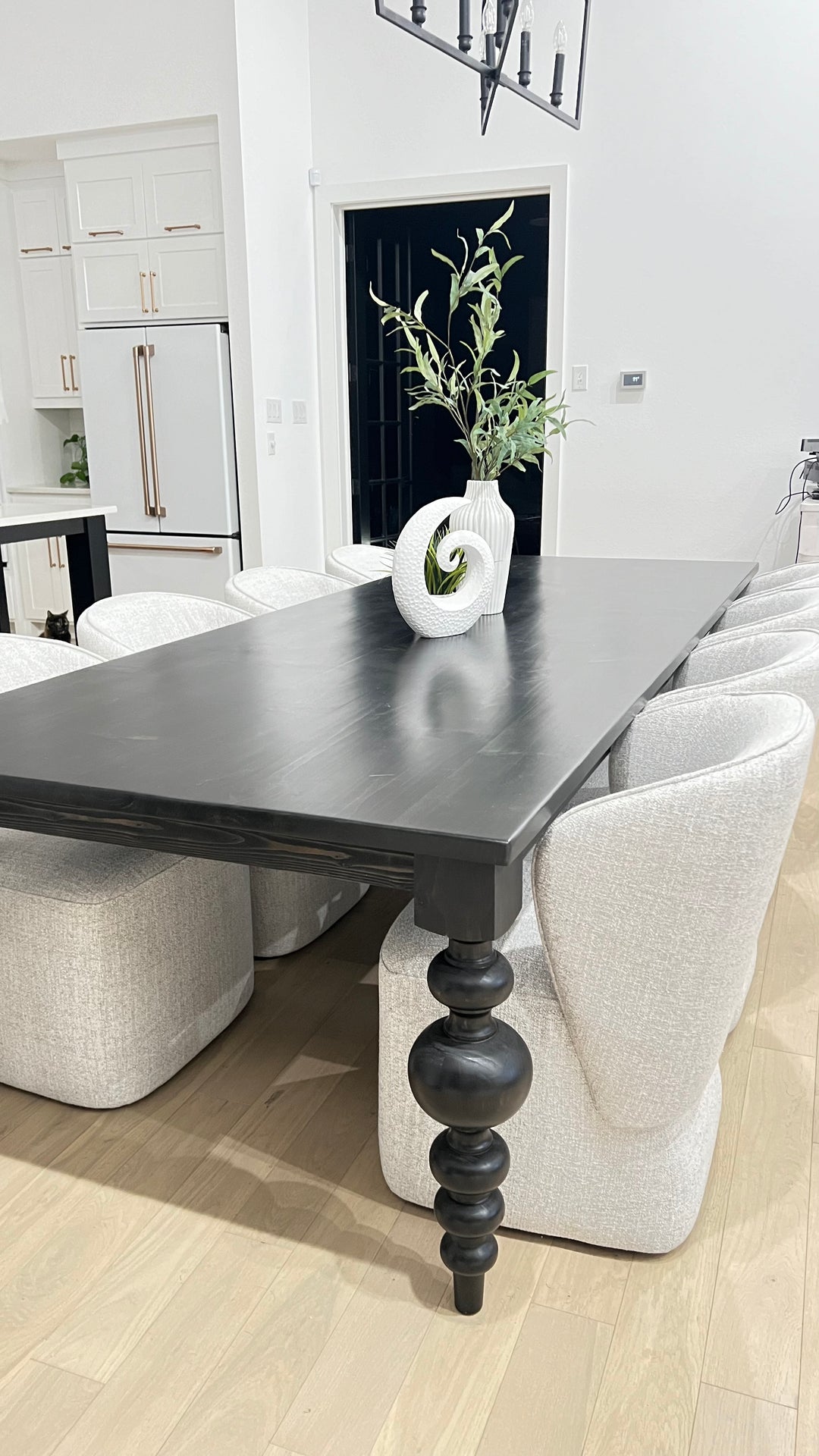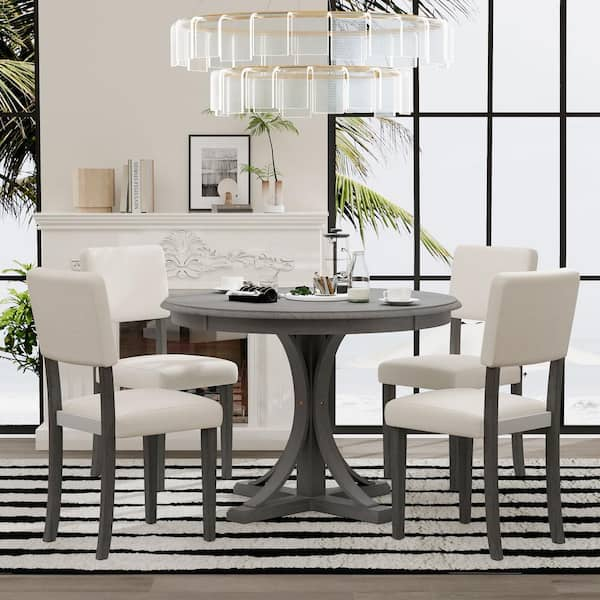How to Choose the Perfect Dining Room Table Legs for Your Home
How to Choose the Perfect Dining Room Table Legs for Your Home
Blog Article
From Conventional to Modern: Locate the Ideal Eating Room Table Legs for Your Style
While timeless designs such as cabriole and turned legs stimulate a sense of classic elegance, contemporary designs like barrette and geometric options present an opportunity for striking aesthetic interest. As you consider these aspects, the question stays: how can you seamlessly integrate these varied leg styles to create an unified dining experience?
Understanding Table Leg Styles
The variety of dining space table leg designs can significantly influence both the aesthetic appeals and capability of the area. Each leg style contributes distinct visual elements and functional features, dealing with varied layout choices and usage needs. Understanding these styles is vital for selecting the right dining table that straightens with your overall interior decoration vision.
For instance, conical legs offer a clean, classic look that can enhance a space's sophistication, while pedestal bases offer stability and make the most of legroom, making them ideal for smaller sized rooms. Barrette legs, a trademark of mid-century modern-day layout, present a commercial flair, permitting an airy, open feel. Likewise, trestle legs evoke rustic appeal, supplying durable support and a sense of timelessness.
Additionally, the choice of materials plays a considerable function. Wood legs can bring warmth and appearance, whereas steel options usually share a smooth, modern ambiance. Inevitably, recognizing table leg designs is important for developing a cohesive eating location that mirrors individual style while ensuring functionality and comfort. By thoughtfully taking into consideration these aspects, you can boost both the functional and aesthetic allure of your eating area.
Typical Table Leg Options
When selecting dining-room table legs, traditional options usually symbolize ageless elegance and craftsmanship. These layouts show a rich heritage and a dedication to high quality, making them excellent for those who appreciate traditional looks.
Among the most famous traditional leg designs is the cabriole leg, identified by its graceful rounded form. This design frequently includes attractive makings and is most commonly found in Queen Anne and Chippendale furniture. One more popular choice is the transformed leg, which boasts a series of smooth, rounded shapes that give a traditional appearance while preserving security.
Moreover, the straight leg, while straightforward, offers a unadorned and sturdy framework that can blend effortlessly with a selection of tabletop styles. For those drawn to ornate outlining, claw-and-ball feet legs stimulate a sense of grandeur and can work as a stunning centerpiece in any type of eating room.
Finally, stand bases, although not strictly legs, supply a different standard choice that enables enough legroom and can be perfectly sculpted. Each of these conventional leg styles adds to the general setting of an eating space, marrying feature with aesthetic appeal.

Modern Table Leg Designs
Modern table leg layouts offer a diverse series of styles that emphasize clean lines and innovative materials. These styles typically focus on performance while acting as striking centerpieces within a dining area. Minimalist visual appeals are widespread, with legs crafted from materials such as metal, glass, and engineered timber, which contribute to a modern and ventilated feeling.
One prominent layout is the hairpin leg, identified by its slim, tapered structure that offers stability without overwhelming the tabletop (dining room table legs). This style is usually located in mid-century modern-day furniture and can easily complement numerous table forms. An additional pattern is the usage of geometric forms, where legs may handle angular or asymmetrical forms, adding aesthetic passion and a touch of artistry

Mixing Styles for One-of-a-kind Spaces
Frequently, property owners look for to develop one-of-a-kind eating rooms that mirror their personal design by blending various layout components. This technique enables the unification of varied aesthetics, resulting in a harmonious yet distinct environment. As an example, coupling a rustic wooden table with streamlined, contemporary metal legs can develop an attractive comparison that boosts the space's total allure.
Furthermore, incorporating vintage table legs with modern table tops can stimulate a sense of history while preserving a modern perceptiveness. Such combinations not just display private preference however also encourage imagination, allowing homeowners to curate a space that feels both personal and welcoming.
Shade plays a vital duty in this mixing procedure; choosing table legs that match or comparison with the existing color pattern can enhance visual passion. For example, whitewashed legs can soften the boldness of a dark table surface area, producing a balanced visual.
Tips for Choosing the Right Legs
Selecting the right table legs is important for attaining both performance and aesthetic charm in your eating room. Begin by thinking about the overall style of your area. Conventional setups benefit from legs that feature intricate carvings or turned styles, while these details modern rooms may require sleek, minimalist styles.
Following, examine the height and security of the legs. dining room table legs. Typical dining tables vary between 28 to 30 inches in height, so guarantee the legs enhance this measurement for convenience. In addition, robust materials, such as wood or steel, can enhance stability and durability
Review the leg form too-- options consist of right, tapered, or stand layouts. Straight legs provide a classic appearance, while tapered legs can include a touch of style. Pedestal bases offer enough legroom and are optimal for smaller areas.
Conclusion
In recap, picking the suitable eating space table legs requires mindful consideration of check this both standard and modern designs. Conventional alternatives such as cabriole and transformed legs provide timeless elegance, while contemporary styles like barrette and geometric forms offer a modern touch. By balancing leg style, height, and material with the general decoration, a natural and inviting atmosphere can be accomplished. Inevitably, the picked table legs ought to show the preferred aesthetic, boosting the dining experience within the area.
The range of eating area table leg designs can substantially influence both the looks and functionality of the room. Inevitably, comprehending table leg styles is crucial for producing a natural dining location that mirrors individual design while making certain usefulness and comfort.One of the most iconic typical leg styles is the cabriole leg, defined by its stylish rounded shape. Straight legs supply a traditional look, while tapered legs can include a touch of sophistication.In recap, picking the perfect dining room table legs requires mindful factor to consider of both click here for more contemporary and standard styles.
Report this page